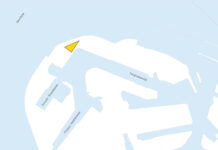
In this week’s “Shipping Number of the Week” from BIMCO, Shipping Analyst Filipe Gouveia examines the substantial impact of limited daily transits in the Panama Canal on the dry bulk market.
Between January and April 2024, transits decreased by 74% year-over-year, leading to a 31% year-over-year increase in sailing distances for affected routes, despite a 25% year-over-year decline in cargo volume.
“The limits in daily transits in the Panama Canal have significantly affected the dry bulk market, with transits down 74% y/y between January and April 2024. During this period, sailing distances for completed voyages in the affected routes rose 31% y/y, while the cargo volume dropped 25% y/y. Overall, tonne mile demand for these routes fell 1% y/y,” commented Filipe Gouveia, a shipping analyst at BIMCO.
Due to low water levels in Lake Gatun, restrictions have been imposed on the number of transits permitted through the Panama Canal, with a maximum draught level of 13.4 meters. Normally, between 34 and 38 ships traverse the canal daily at draught levels of 15.2 meters. At the beginning of the year, only 22 daily transits were allowed. However, by April, the number had increased to 27 transits, and it currently stands at 31 transits.
The dry bulk sector has felt the brunt of the reduced transits due to its market’s unpredictable nature. Unlike container ships, which typically adhere to fixed schedules, bulk carriers face challenges in securing transit slots through the canal. Consequently, many dry bulk operators have opted to reroute their vessels, choosing to sail around the Cape of Good Hope or Cape Horn instead. This decision has led to longer sailing distances and increased demand in alternative routes.
“If sailing distances had not increased, the lower cargo volumes would have caused a 2% decrease in tonne mile demand for segments smaller than capesize. That would have been a significant downward pressure on freight rates for these segments and could have prevented the 20-30% y/y jump in the segments’ Baltic indices recorded between January and April,” added Gouveia.
The decline in cargo volumes during this period was primarily attributed to reduced grain shipments from the US to East Asia. China’s increased grain purchases from Brazil, typically transported via the Cape of Good Hope route, contributed to this trend. Grains presently constitute 34% of the cargo passing through the Panama Canal, with the majority originating from the US.
Coal, steel, fertilizers, and petcoke are other significant dry bulk cargoes commonly traversing the Panama Canal. Despite the imposed restrictions, shipments of steel and fertilizer through the canal have largely maintained stability.
“The disruptions in the Panama Canal could soon come to an end, ahead of the maize and soya bean harvests in the US in September. On 1 June, the daily transits through the Panama Canal will increase yet again to 32 transits per day and the ongoing rainy season in Panama could lead to further increases. As conditions normalise and sailing distances shorten, we may see a decline in demand for ships on the affected routes,” explained Gouveia.





